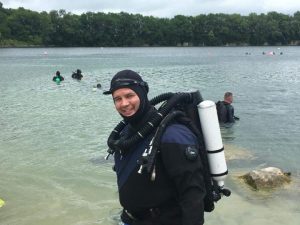Tips For Duck Hunting


When it comes to duck hunting, there are many tips that you can use. From choosing the best location to finding the right ducks, there are several things you should consider before hitting the water.
Understanding why ducks do what they do
If you’ve ever seen a duck in your backyard, you may wonder why they do what they do. Ducks are among the most vocal birds. You can even identify them by their calls, which are different for each species.
Despite their relatively small size, ducks can fly up to 50 miles an hour. They’re also good swimmers. This is due to their compact bodies, which means they don’t have to spend a lot of energy.
While they don’t prey on much, they can eat insects and small animals. It’s also worth noting that ducks have a split brains. Each half of their brain controls a different eye. When they’re sleeping, the half that controls the other eye keeps an eye out for danger.
When identifying a mate, the female duck quacks, which signals to other ducks that the drake is her mate.
Decoy spreads vary in size.
The size of decoy spreads for duck hunting depends on the location and the hunting style. For example, a boat hunter needs a larger spread than a walk-in/wade-in hunter. Likewise, a refuge spread requires more decoys than a flooded timber hunter.
Regardless of the type of spread, hunters should use decoys that mimic the right materials. These can include canvasback drake decoys or a raft of decoys to lure other diving ducks into the area.
Diving duck hunters commonly use a large raft of decoys. In addition to diving, ducks, bluebills, goldeneyes, and redheads are often drawn into a decoy spread.
To increase your chances of success, build a decoy spread based on the type of ducks you are hunting. Mallards are a common species in most puddle duck spreads. But it would help if you also considered using bluebills and Canada geese.
Movement is all you need to get ducks to commit.
There’s one thing that’s for certain when it comes to duck hunting; they’re a moving lot. For example, they’ll fly past your decoys even if you’re standing in a blind. The trick is figuring out how to keep them on your side of the blind.
It would help if you also studied the birds, their habits, and their surroundings. Observing their behaviour is the best way to improve your chances of success. To this end, consider a visit to a waterfowl refuge or two. Some of the most productive late-season days are spent in riparian areas where the ducks are most likely to be.
It’s also worth remembering that some ducks may be more attuned to your presence than others. In this case, you must be careful how you set up your decoys.
Avoid spooking ducks in the dark.
When duck hunting in the dark, you will want to use a variety of decoys and cover to avoid spooking the birds. If you have a large area, you can set up several spreads of decoys for your hunt.
Ducks in the dark tend to move away from hunters. You must hide and sneak up on the ducks to avoid spooking them. The most effective place to do this is in a stream. You can set up a couple of decoys near the water and a couple more along the horizon.
To get an idea of where the ducks are hiding, try to scout the area before you go out. This will allow you to see how they are positioned and where they are feeding. It’s also a good idea to look for droppings and matted grass.
Creating open water holes in frozen marshes and lakes
When hunting for ducks in winter, you’ll want to keep the water in your area open. While you may prefer to avoid standing in a hole with ice, there are many methods for creating and keeping an open water hole in frozen marshes and lakes.
The trick to creating a hole is to have plenty of room to get into the hole. For example, you can use a metal-tooth rake to break up small chunks of ice. Or you can set up a jerk rig, a series of floating decoys that create ripples in the water.
Another method for creating an open water hole in a frozen marsh is to use an ice eater. Ice eaters are used in permanent wetlands, breaking up the ice while generating a constant flow of water.
